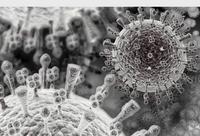-
Air transportation data helps identify, predict pandemics
Computational model demonstrates how disease spreads in a highly connected world. The computational work has led to a new mathematical theory for understanding the global spread of epidemics. The resulting insights could not only help identify an outbreak’s origin but could also significantly improve the ability to forecast the global pathways through which a disease might spread.
-
-
U.K. tightens animal disease surveillance
The U.K. Animal Health and Veterinary Laboratories Agency(AHVLA) has introduced a new surveillance system to detect new and re-emerging animal disease threats in England and Wales. The new system is expected to improve the geographical and species-specific coverage of disease.The new system will rely more on private sector laboratories for gathering surveillance intelligence and less on government laboratories.
-
-
New weapon in the war on superbugs
In the arms race between bacteria and modern medicine, bacteria have gained an edge. In recent decades, bacterial resistance to antibiotics has developed faster than the production of new antibiotics, making bacterial infections increasingly difficult to treat. Scientists worry that a particularly virulent and deadly “superbug” could one day join the ranks of existing untreatable bacteria, causing a public health catastrophe comparable with the Black Death.
-
-
1950s pandemic flu virus still a health threat today, particularly to those under 50

Scientists have evidence that descendants of the H2N2 avian influenza A virus that killed millions worldwide in the 1950s still pose a threat to human health, particularly to those under 50. The study included twenty-two H2N2 avian viruses collected from domestic poultry and wild aquatic birds between 1961 and 2008, making it the most comprehensive analysis yet of avian H2N2 viruses.
-
-
Seeds from Moringa oleifera trees better then chemicals for purifying water
Clean water is essential for good health. In many countries it is still difficult to obtain clean water. Even developed countries can benefit from a process that treats waste water without addition of further synthetic chemicals. Seeds from Moringa oleifera trees can be used to purify water. Researchers have discovered that seed material can offer a more efficient purification process than conventional synthetic materials in use today.
-
-
Stolen nuclear material found intact in Mexico
Mexican police yesterday said they have found a truck, a white 2007 Volkswagen cargo vehicle, which was stolen Monday by thieves who apparently were not aware that it was carrying toxic radioactive medical material from a hospital to a disposal site. The cobalt-60 the truck was carrying could be used to build a “dirty bomb.” The IAEA said that more than 100 incidents of thefts and other unauthorized activities involving nuclear and radioactive material are reported to the agency annually.
-
-
Yasser Arafat was not poisoned: French investigators

French scientific and medical experts rule out possibility that Palestinian leader was poisoned by radioactive polonium-210. A Russian medical team examining tissue samples taken from Arafat’s body reached the same conclusion three months ago. The conclusions of a Swiss medical team were more ambiguous. Leaders of the Palestinian Authority began accusing Israel of poisoning Arafat even before he died, as his health was rapidly declining. Israel has consistently denied the accusation, describing it as “unreasonable and unsupported by facts.”
-
-
Arafat may have been poisoned, but what is polonium?

A Swiss forensic report of the exhumed remains of ex-Palestinian leader Yasser Arafat last month suggested polonium poisoning may have been the cause of death – but what is polonium, and why is it so deadly? Polonium is a highly radioactive heavy metal. It is arguably the most lethal known material. Although it has some minor industrial uses it is best known for links with possible assassinations. It is also used to produce neutrons in the core of nuclear weapons. Polonium is element 84 in the periodic table, and all of its isotopes are radioactive. Their half-lives vary between a few millionths of a second to 103 years.
-
-
New malaria vaccine offers a new mode of protection
Malaria kills more than 660,000 people each year, most of whom are children in Africa. A novel malaria vaccine developed at Oxford University has shown promising results in the first clinical trial to test whether it can protect people against the mosquito-borne disease.
-
-
Stopping malaria transmission
Malaria is preventable and treatable. Yet, according to the World Health Organization, an estimated 219 million malaria cases occurred globally in 2010. The disease killed about 660 000 people, most of them children under five years of age, at the same time that increasing drug resistance might soon limit treatment options. Researchers say that to eradicate this disease, there is a need to look beyond treatment, and seek drugs that block transmission between humans and mosquitoes.
-
-
Detecting radioactive material in nuclear waste water
As the Fukushima crisis continues to remind the world of the potential dangers of nuclear disposal and unforeseen accidents, scientists are reporting progress toward a new way to detect the radioactive materials uranium and plutonium in waste water.
-
-
Using gaming to spark kids' STEM interest, improve physical fitness
A team of Purdue University technology researchers will use a $1.2 million National Science Foundation grant to tackle two national challenges: increasing children’s interest in science, technology, engineering, and math (STEM); and decreasing childhood obesity. The three-year project parlays kids’ innate interest in video games and solving big problems to inspire them to gain the STEM skills needed to create technology-based fitness games. The project will also encourage students to create exergames that require players to get up and move.
-
-
New drone to monitor radiation following nuclear disasters

Researchers have unveiled a large semi-autonomous drone called the ARM system which could be used to provide visual and thermal monitoring of radiation after a release of nuclear material. The system was developed in response to requirements for radiation monitoring in event of the release of radioactive materials.
-
-
Malaria parasite circumvents natural defense
Researchers have discovered recent genetic mutations in a parasite that causes over 100 million cases of malaria annually — changes that may render tens of millions of Africans who had been considered resistant, susceptible to infection. The 3-gene mutations appear to be the parasite’s invasion mechanisms. The changes occur in the Plasmodium vivax genome, and the Malaria Atlas Project estimates 2.5 billion people worldwide are at risk for P. vivax malaria.
-
-
Philippines prepares for worse disasters to come
On average, the Philippines experiences about twenty typhoons a year, including three super-typhoons and many incidents of flooding, drought, earthquakes, tremors, and occasional volcanic eruptions, making the country one of the most naturally disaster-prone areas in the world. Filipino government agencies, with the help of international disaster and relief agencies, have created new strategies for disaster preparedness, response, and mitigation which may well have potential applications in other parts of the world. As the impact of climate change grows more pronounced, the Philippines is becoming a hothouse for developing new methods and systems in the growing business of disaster relief.
-
More headlines
The long view
We Ran the C.D.C.: Kennedy Is Endangering Every American’s Health
Nine former leaders of the Centers for Disease Control and Prevention (CDC), who served as directors or acting directors under Republican and Democratic administrations, serving under presidents from Jimmy Carter to Donald Trrump, argue that HHS Secretary Roert F. Kennedy Jr. poses a clear and present danger to the health of Americans. He has placed anti-vaxxers and conspiracy theorists at top HHS positions, and he appears to be guided by a hostility to science and a belief in bizarre, unscientific approaches to public health.
